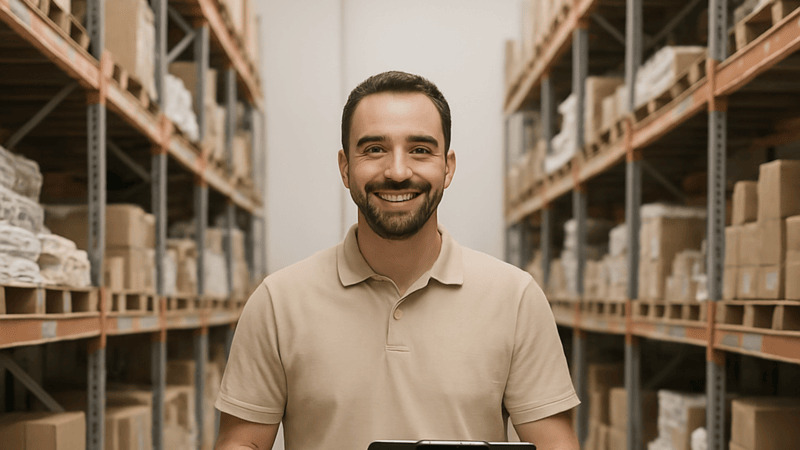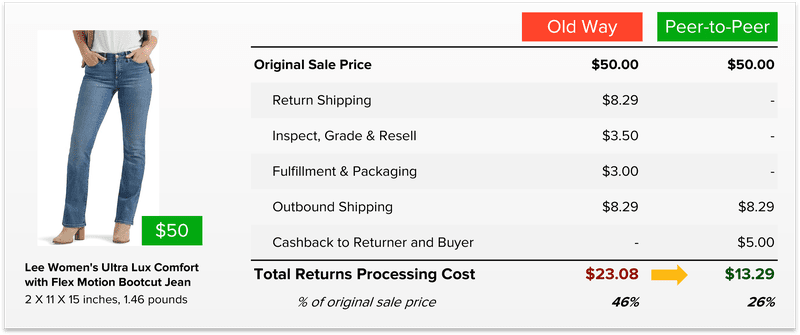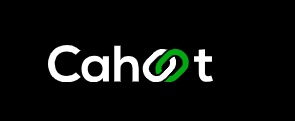How to Choose the Right 3PL Company

Last updated on February 19, 2025

The thrill of growing your own ecommerce business can quickly give way to backaches as you personally store and fulfill tens or hundreds of orders per day. And that’s not even mentioning the garage-full of inventory that you can hardly navigate!
On the other end of the spectrum, large businesses can also easily see their logistics overwhelmed by growth. They may need additional warehouse space, or find it challenging to expand their own warehouse, new fulfillment capabilities, or a better footprint across the country to reduce final mile shipping distances.
Both of these types of sellers need the same thing: a third-party logistics (3PL) partner.
In this article, we’ll provide a quick rundown of what a 3PL does before providing an in-depth guide to what you should look for in a 3PL when you need to outsource fulfillment.
What is a Third-party Logistics (3PL) Company?
A third party logistics (3PL) provider, broadly speaking, is a company that handles inventory management, warehousing, and fulfillment for retailers. The industry has undergone a massive transformation over the past two decades as retail growth has shifted online, but the basic principles have remained the same. Logistics management is fundamental to 3PL services, which focus on executing logistical tasks efficiently.
3PLs receive inventory from their customers, and then they safely store it in the manner required to support efficient outbounds. They integrate with their customers’ sales channels, so that when an order comes in, the 3PL fulfills it without intervention from the seller. Within that broad characterization, there’s as much variety in the 3PL industry as there is in retail.
Some 3PLs focus exclusively on retail replenishment, while others take the opposite approach and only work with ecommerce sellers. Some will specialize based on the type of goods fulfilled, as many require special handling or conditions in the warehouse (such as oversized items or refrigeration). Others will focus on creating dense networks in certain regions of the country, while many now compete with Amazon to create robust nationwide networks.
Definition of 3PL
A 3PL, or Third-Party Logistics provider, is a company that offers outsourced logistics services to manage one or more aspects of a business’s supply chain operations. This can include inventory management, warehousing, transportation, and distribution. By partnering with a 3PL provider, businesses can streamline their logistics operations, reduce costs, and improve efficiency. Third party logistics providers bring specialized expertise and technology to the table, allowing businesses to focus on their core competencies while leaving the complexities of logistics operations to the experts. Whether it’s managing inventory, optimizing warehouse space, or coordinating transportation services, a 3PL provider can significantly enhance the overall performance of a supply chain.
Benefits Of Using A 3PL Provider
Using a 3PL provider can bring numerous benefits to a business, including:
- Cost Savings: Third party logistics providers can help businesses reduce their logistics costs by leveraging their expertise, technology, and economies of scale. By outsourcing logistics operations, businesses can avoid the investments required for infrastructure and personnel.
- Improved Efficiency: 3PL providers can help businesses streamline their logistics operations, reducing the time and effort required to manage inventory, transportation, and distribution. With advanced warehouse management software and transportation management systems, 3PLs can optimize every step of the logistics process.
- Increased Scalability: As businesses grow, their logistics needs become more complex. A 3PL provider can help businesses scale their logistics operations quickly and efficiently, without the need for significant investments in infrastructure or personnel. This flexibility allows businesses to adapt to changing market demands with ease.
- Enhanced Customer Service: 3PL providers can help businesses improve their customer service by providing fast, reliable, and flexible logistics solutions. With efficient logistics operations, businesses can ensure timely deliveries and accurate order fulfillment, leading to higher customer satisfaction.
- Access to Specialized Expertise: 3PL providers offer access to specialized expertise and technology, such as warehouse management software and transportation management systems. This allows businesses to benefit from the latest advancements in logistics without having to develop these capabilities in-house.
How Do 3PLs Work?
Generally speaking, a 3PL owns two critical aspects of the ecommerce logistics chain: inventory storage and pick & pack fulfillment. As reverse logistics become more prominent, many 3PLs are also building out the ability to operate “in reverse” to help their clients manage returns.
In this section, we’ll provide a run-down of standard 3PL processes that make the operation hum.
Technical Integration
To start, ecommerce 3PLs need to be able to see orders received by their clients in real time in order to be able to fulfill them quickly. Before the rise of ecommerce, and even in the early days of the ecommerce revolution, speed was not a priority for order fulfillment. Many clients would manually send their 3PLs orders in Excel spreadsheets (or even in Word docs) at the end of each day or week, and then the 3PL would get to work fulfilling the orders.
You don’t need us to tell you that the world works a bit differently these days.
Today, any 3PL set up for ecommerce insists on building a direct integration between their systems and a customers’ sales channels. Without an instantaneous feed of orders from ecommerce channels like Amazon or Shopify, orders wouldn’t be shipped on time, and sellers would be faced with a deluge of unhappy customers asking why their shipments are delayed. The best 3PLs have pre-built integrations with major marketplaces, shopping carts, and ecommerce platforms, so integrations are as simple as a few clicks for their customers. They also have open APIs that support more custom integrations to reflect the diversity of tech stacks that modern sellers have built.
Inventory Receiving
Next in the process is receiving – after all, a 3PL can’t fulfill orders with inventory that it doesn’t have. Sellers can send their inventory via freight directly from their manufacturer to their 3PL, while giving the manufacturer any receiving specifications the 3PL might have. This minimizes the number of intermediary stops for inventory, which reduces cost and the potential for inventory to get stuck inaccessible in the wrong location.
Generally speaking, 3PLs prefer to receive pallets with as few SKUs as possible, prepped for shipping, and pre-labeled. This “platonic ideal” of receiving, though, is rarely fully true, and so many 3PLs offer inventory prep services to get items ready for shipping. This enables the seller to still ship directly from the manufacturer to the 3PL, even if the manufacturer isn’t well versed in how to prepare items for ecommerce.
Long receiving times are a big problem in the eCommerce world – Amazon FBA, for instance, takes up to 14 days to get inventory that is at their fulfillment centers ready to ship. A two week wait is unacceptable for sellers who could see their best sellers go out of stock while waiting. That’s why Cahoot’s fulfillment services offer an industry-leading receiving SLA.
Inventory Storage
Much of the floorspace in a warehouse is dedicated to inventory storage, but the way in which 3PLs store inventory has changed dramatically thanks to the shift towards ecommerce order fulfillment. A cloud-based warehouse management system (WMS) can enhance visibility and streamline inventory management across multiple fulfillment centers.
Warehousing services that focus on B2B replenishment store their inventory efficiently in large bundles – think of a full pallet of goods, or a pallet of goods off of which multiple cases can quickly be picked.
Inventory storage at a warehouse that fulfills ecommerce orders is instead optimized so that orders can easily be picked in “eaches” (or single quantities). The speed with which a warehouse picker can get to items and pull one or more out is vital to operations because they have to repeat the process hundreds of times per day.
Warehouse Fulfillment
Pick and pack fulfillment is the term for the process by which 3PL personnel select the items that a customer ordered and put them in boxes ready to ship. This is the most vital part of the process for ecommerce sellers, because speed and accuracy underpin a positive customer post-purchase experience.
Amazon Prime’s continual push to cut delivery times shorter means that warehouses can’t wait to fulfill orders; each customer that presses “buy” needs to have their item picked, packed, and dropped off with the carrier that same day. Anything less will result in a delivery delay, and delivery delays lead to negative customer reviews.
Next-gen 3PLs like Cahoot have developed intelligent software controls to maximize the speed and accuracy of picking and packing in their warehouses. Cahoot software, for instance, intelligently directs warehouse personnel to maximum speed and efficiency with pick lists of products. The pickers then use barcode scanners to ensure that the right product is picked every single time. In this way, Cahoot achieves both speed and accuracy, ensuring the zero-defect, fast fulfillment that customers demand.
Returns Processing And Reverse Logistics
eCommerce warehouses must be able to handle returns – those that don’t leave their customers unable to provide a critical service to the end customer. Marketplaces again have led the market with super-easy no-fault returns policies, so online merchants of all stripes are under heavy pressure to offer the same on their DTC sites. So, warehouses have to be able to receive returns, assess whether they’re damaged or not, and process them back into available stock whenever possible to minimize loss.
Signs that Your Organization Needs a 3PL Provider
If your business is experiencing any of the following signs, it may be time to consider partnering with a 3PL provider:
- Rapid Growth: If your business is growing rapidly, a 3PL provider can help you scale your logistics operations quickly and efficiently. They can provide the necessary infrastructure and expertise to handle increased order volumes and complex logistics requirements.
- Complex Logistics Needs: If your business has complex logistics needs, such as multiple warehouses, transportation modes, or inventory management requirements, a 3PL provider can help you manage these needs effectively. Their experience and technology can streamline logistics operations, ensuring smooth and efficient processes.
- High Logistics Costs: If your business is experiencing high logistics costs, a 3PL provider can help you reduce these costs by leveraging their expertise, technology, and economies of scale. They can identify inefficiencies and implement cost-saving measures to optimize your logistics operations.
- Limited Logistics Expertise: If your business lacks logistics expertise, a 3PL provider can provide you with access to specialized knowledge and technology. Their experience in managing complex logistics operations can help you overcome challenges and improve overall efficiency.
What Should You Look for in 3PL Companies?
If you’re an ambitious seller looking to boost your growth, you should know that the right 3PL can be a revenue driver, and not just a cost center. The best 3PLs will improve your delivery experience, which makes for happy customers that buy again and again. They can also help you control and reduce shipping costs by leveraging partnerships with various carriers.
Here are the most important things to look for in your 3PL:
Nationwide Warehouses
Even if you’re small now, you can still strategically distribute your inventory to unlock affordable fast shipping. That is, if your 3PL has nationwide USA fulfillment centers. A third party logistics company can enable businesses to expand their operational reach into new sales channels and regions.
A McKinsey study found that a whopping 90% of US online shoppers expect free two- to three-day shipping, and Amazon metrics show that turning on the Prime badge can net 50% growth for a product. If you or your current 3PL only have one or two locations to ship from, though, two-day shipping to customers halfway across the country requires eye-watering expedited shipping rates. That’s where strategic inventory distribution comes into play.
The best 3PLs offer true national fulfillment services by placing inventory in 4+ locations strategically across the country. The benefit to you is that these networks will cover 99%+ of US consumers with 2-day shipping at economy shipping rates. No matter where your customer wants their product shipped, you’ll have inventory nearby. They get their item lightning-fast, and you pay the cheapest possible rate.
User-Friendly Warehouse Management Software
If you can’t get real-time updates on the status of your orders, your inventory levels, and shipping and fulfillment costs, then you’re not working with a cutting-edge 3PL.
Older (and even some of the new) 3PLs can feel like a black box into which sellers send their inventory, and then they have no idea how much of what product they have left due to inconsistent communication.
The best 3PLs, on the other hand, have software that proactively notifies customers with critical information. Unfortunately, things go wrong all the time in the logistics world. It can be as simple as an undeliverable address input by a customer, and as complex as a worldwide shipping crunch. Your 3PL shouldn’t leave it up to you to find issues in fulfillment – for instance, the software should alert you when a customer places an order with an undeliverable address. You can then fix the issue with the address before it turns into a late shipment, and you’ll keep the customer happy.
Top-Tier Reliability
Reviews are your lifeblood, and a happy customer is a repeat customer. You probably can recall poor reviews and lost customers that were due to errors from your 3PL that you couldn’t control!
The best 3PLs almost never make mistakes thanks to the technology they use to ensure accurate and fast picking. Look for an on-time fulfillment rate of 99.9% or higher – anything less signals a 3PL that isn’t built for the rigorous demands of modern eCommerce.
“I was struggling to find even a handful of orders that we’ve had issues with… I can’t even remember a single order that was shipped out late.”
~ Michael Pursey, COO of Cali’s Books
Speak to a fulfillment expert
Cahoot achieves zero-defect fulfillment with a mix of top-tier professionals and top-tier software. Our commitment to high standards starts with the warehouses that we accept into our network: we turn away many more than we accept, and we demand that they have a long track record of demanding ecommerce fulfillment environments like executing Seller Fulfilled Prime. Then, they install our rigorous software on top of their already excellent operations, and the result is a 3PL that leads the way with over 99.9% on-time fulfillment and 99.95% order accuracy.
Flexibility and Scalability
It shouldn’t be hard to connect your Amazon account and Shopify store to your 3PL – the best ones have pre-built integrations that will do it with a few clicks.
Ecommerce merchants are pushing into multiple sales channels to maximize growth, and your 3PL should be able to easily integrate with all of them. Their integrations make it easy to switch fulfillment and get up-and-running with the new service in no time.
Scalability goes past just easy integrations, though. Many 3PLs, and especially many of the newer “tech enabled 3PL networks”, are optimizing narrowly for only certain types of products. Certain 3PLs, for instance, specialize in the highly specific needs of merchants who sell and ship food products or electronics, both of which require more care and attention to detail than other goods.
The flexible Cahoot peer-to-peer fulfillment network, in contrast, can handle efficient retail replenishment as easily as it handles low-cost fast ecommerce fulfillment. We handle challenging beauty products’ fulfillment as readily as we excel in consumer packaged goods. Unlike others that have built or partnered one type of warehouse over and over across the country, we install our flexible software in warehouses with diverse specialties. The only common thread they have is their excellence. The result is that we scale our customers’ operations no matter their selling channel; for instance, some of our most successful customers are winning growth on Amazon, Shopify, and with retail stores like Nordstrom all at the same time.
Responsive Customer Service
Finally, you should be able to get in touch with your 3PL easily to troubleshoot challenges and come up with fixes. Look for a 3PL that offers you a real person to work with your account, and multiple ways to get in touch with them. If it’s a small issue, live chat will do. Thornier challenges, on the other hand, should be governed by a detailed ticket system. And of course, you need a phone line for critical issues.
Cahoot clients agree that our service team is the lifeblood of our 3PL. Our detailed but user-friendly onboarding process ensures that our merchants are able to smoothly transition from their previous fulfillment solutions, while also enabling us to get to know your business in detail to better fit your needs. With other big 3PLs, you’ll have to re-explain your business and its requirements every time you submit a ticket. With Cahoot, our US-based team takes the time to learn who you are and what you need to succeed, so that if an issue arises, they can get right down to fixing it immediately.
3PL vs. 4PL: What’s the Difference?
A 3PL provider manages a specific aspect of a business’s supply chain operations, such as inventory management or transportation. They focus on optimizing individual components of the supply chain to improve efficiency and reduce costs. On the other hand, a 4PL provider manages the entire supply chain, including multiple 3PL providers. Acting as a single point of contact for all logistics needs, a 4PL provider offers a more comprehensive and integrated logistics solution. They oversee the entire supply chain, from procurement to distribution, ensuring seamless coordination and optimization of all logistics operations. By managing the entire supply chain, a 4PL provider can provide businesses with a holistic approach to supply chain management, enhancing overall performance and efficiency.
Top 3PL Companies
Now that you know what to look for, how do a few of the top players in the industry stack up? We’ve provided a primer to help jump-start your research.
Fulfillment by Amazon (FBA)
FBA, the elephant in the room, is Amazon’s fulfillment solution for 3rd party merchants selling on their marketplace.
Amazon Buy with Prime
You can also use Amazon’s fulfillment network, FBA, to fulfill direct-to-consumer (DTC) orders from your own website. Buy with Prime is an extension of their existing service, Amazon Multi-Channel Fulfillment (MCF).
Walmart Fulfillment Services
Walmart has built a fulfillment network to compete with FBA, named Walmart Fulfillment Services. Like FBA, it’s built solely for 3rd party sellers selling on Walmart.com.
ShipBob
ShipBob is a 3PL that focuses on serving eCommerce merchants. They have a nationwide network of fulfillment centers that enable fast shipping, but they charge extra for guaranteed 2-day shipping.
Red Stag Fulfillment
Red Stag Fulfillment is a more traditional 3PL, with only a few locations in the United States. They offer B2B fulfillment in addition to B2C, as they have a wider focus than eCommerce.
Cahoot: The Next Gen 3PL
Cahoot’s fulfillment network is built for eCommerce. We’ll help you delight your customers with a stellar, Amazon-like delivery experience while reducing the amount of time your team spends on operations. We support your growth, no matter where you sell – we have pre-built integrations with major marketplaces and shopping carts and we power efficient B2B fulfillment. Our tailored solutions help streamline supply chains, reduce costs, and improve customer satisfaction.
Our innovative peer-to-peer model offers low-cost, fast fulfillment by design. We’re “peer to peer” because our fulfillment network is made up of ecommerce sellers with excess capacity in their own, excellent operations. We help them fully utilize their capacity by fulfilling for other sellers like you, and as a result, our pricing is typically lower than that of other top providers listed above. Because we only add the best of the best warehouses to our network, we also beat the competition on fulfillment speed and reliability.
If you’d like to find out how Cahoot can help your business, please get in touch with us. We can’t wait to show you how easy operations can be.

Up to 64% Lower Returns Processing Cost


 20 minutes
20 minutes